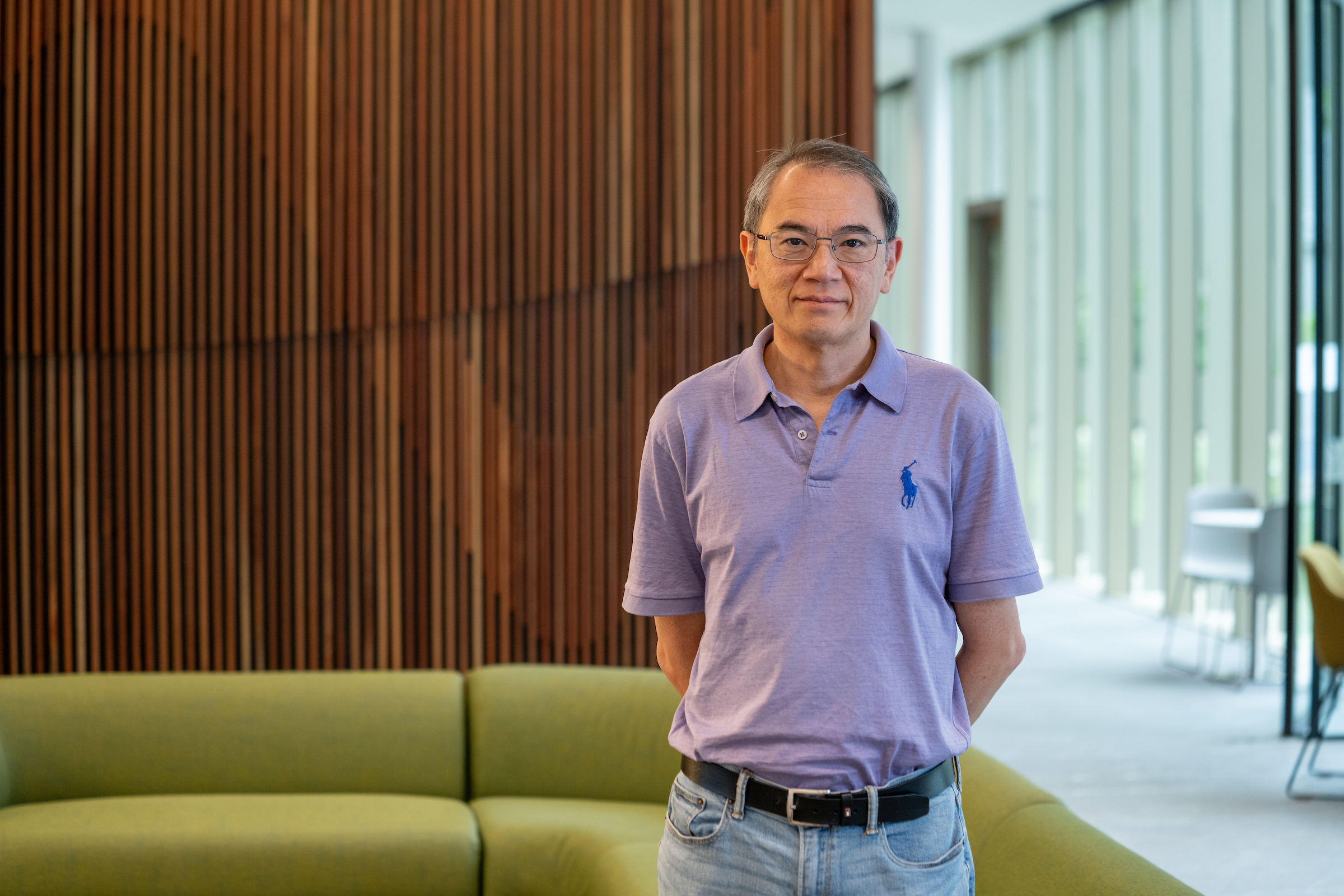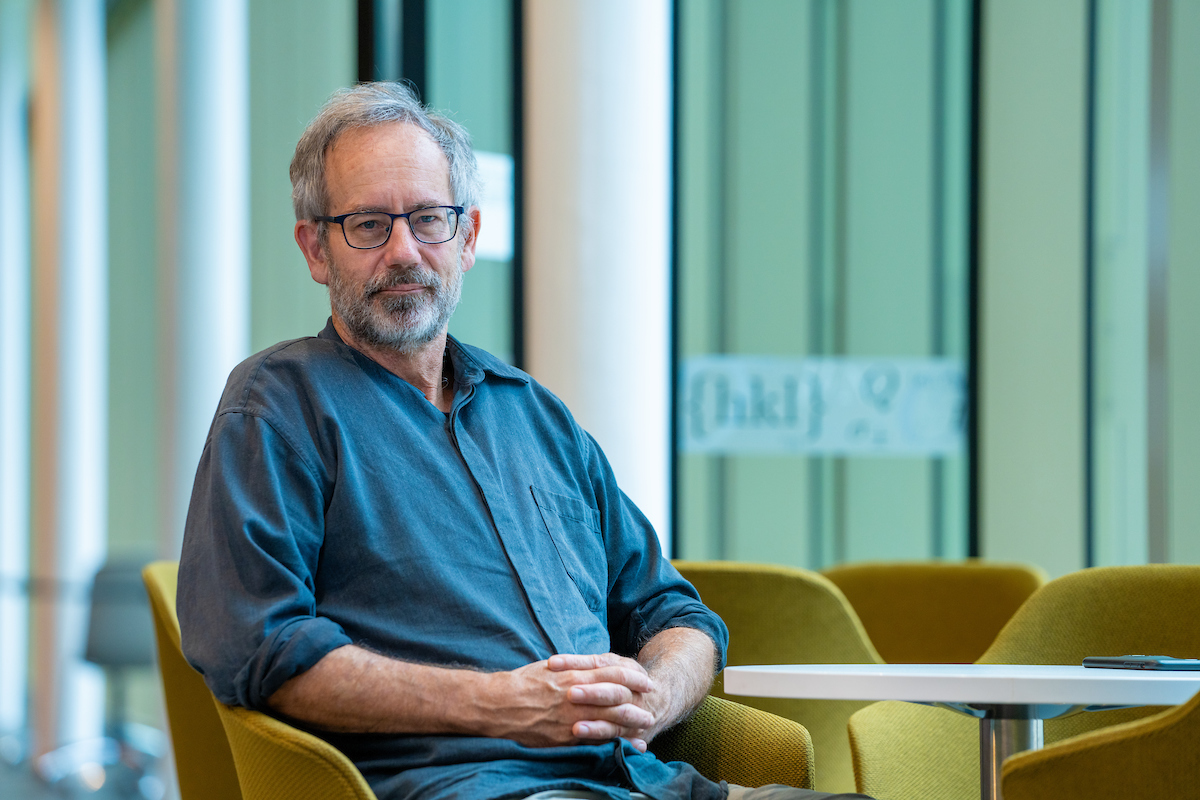
We asked physicists to tell us about a time they failed
One thing about stories of scientific failure is they usually start with the exciting possibility of discovering something brand new.
For Professor Jodie Bradby, who co-leads the Advanced Materials Group at the ANU Research School of Physics, it was a new structure of silicon.
“Solving the structure of an element as important as silicon would be amazing - a career high,” she says.
“And we saw a hint of it. Other people had previously seen hints of it too, and they had labelled it silicon 13, which is where I think they went wrong.”
But there was a moment, almost 20 years ago, when she thought she might have gotten lucky.
“We were shining a laser onto our silicon samples and we saw all these characteristic peaks, and then we saw there were these extra, new ones. And we thought, ‘Ooh, what’s that?’
“We did it a few different ways and we found we could repeat it, and we thought, ‘Oh my god, we’ve found a new phase of silicon! We’ve made silicon 13!’”
Professor Bradby and her collaborators got busy booking in beamtime at the Argonne National Laboratory Synchotron in the US to confirm their discovery.
“It’s really hard to get time on these things and it’s expensive to go there, but we thought, ‘This will be easy! We’ll just make it with our recipe, put it in and look for this phase of silicon 13!’
“So we got there, and we saw… nothing.
“We didn't understand what had happened, so then we looked at it with a different way with the electron microscope.
“We worked 20-hour days. We never saw anything.”
On the way home, empty-handed and exhausted, she slept so soundly on the plane that the man sitting next to her thought she must be unwell.
“When I said I was fine, he was like, ‘How did you sleep like that? Did you take drugs?’ And I said, ‘No, I’ve just been working really hard. I’m a scientist.’”
Looking back, I ask her, how do you feel about that experience?
“It was fun!” she says.

To have had such high hopes, and worked so hard, and then ended up with nothing to show for it - that doesn’t sound fun.
But that’s the same word Professor Hoe Tan uses to describe his own experience of failure.
Professor Tan is acting head of the Semiconductor Optoelectronics and Nanotechnology Group, where, about ten years ago, he was working on an ARC Discovery project to use hexagonal boron nitride to make deep-UV LEDs.
It was a great idea with an important, lucrative application: these LEDs could potentially be used to sterilise water easily and quickly. The US Department of Defense had already invested tens of millions of dollars into the development of such a device, and Professor Tan’s project was a promising new approach.
About eighteen months into the project, however, it became apparent that their idea simply would not work.
“We were very disappointed when we realised,” Professor Tan reflects. “We definitely were. But then again, problem-solving is fun.”
There was no way to achieve the intended goal, but working with a student, they were able to take the research in a different direction and ended up publishing some compelling findings.
But, I say, weren’t you upset that your original, game-changing idea hadn’t worked out?
“No, I was never worried,” he replies. “The beauty of scientists is our ingenuity. I knew something would come out of it.”
“And anyway,” he adds, “always getting what you expected would be boring. Getting something out of the blue? That’s more exciting.”

Professor John Close, who leads the Atom Laser Group at the ANU Research School of Physics, grins as he tells the story of “a groundbreaking experiment” he pursued as a postdoctoral fellow.
“It really was groundbreaking!” he says. Or, at least, it would have been if it had worked.
The experiment was to measure the rate of rotation of quantised vortices, something which had never been done before, using a freestanding helium droplet.
“That was a huge experiment and a huge grand plan. And I was over-confident because that’s been one of my traits over the course of my life,” he says, laughing.
“But in retrospect, it was crazy.”
The grand plan, facilitated by a fellowship at the Max Plank Institute in Germany, was to push helium gas through a nozzle at low temperature, while spinning the nozzle so quickly that the gas would, under momentum, produce a whirlpool. This would then be pushed through a gas of silver atoms to measure the vortex.
“Well,” Professor Close recalls ruefully, “it was really, really hard.” No results were forthcoming.
Then, one afternoon, Professor Close and his collaborators returned to the lab from lunch to discover they had left the silver oven on, causing the pressure to increase significantly.
“We turned on the helium beam and instead of getting a single silver atom, we began to get clusters of silver atoms inside the droplets.
“And the cool bit about this was we had all the tools set up to be able to study mass-selected, small metal clusters at very low temperatures, in a weakly interacting environment.”
It was, he says, “a beautiful idea.”
“Did we rescue some really great papers and graduate some really great students and have a lot of fun? Yes. Did we detect vortices in this really groundbreaking way? No.
“I really wanted that result, and it didn’t happen.”
The failure stuck with him for quite a while, he says. Around twenty years later, another group of researchers did manage to succeed with an experiment using the same basic idea.
“I was pleased that it had been done,” he reflects. “But, yes, it did bother me, on a simple, human, selfish level that it wasn’t me who did it.”
But one of the luxuries of a more established scientific career, he says, is how you develop your understanding of what counts as success.
“For a good number of years now, the metric of success for me has not been the next big paper. It’s been whether I can get young people out into the world trained and happy. And then when they're back in town, they're going to bother dropping me an email saying, ‘Hey John, let's get together and have some lunch.’
“That means we did some good work together, and we had a good group culture with good working relationships. That is my metric of success now.”

Another thing about stories of failure in science is they often have a happy ending. Fortuitously, the failure ends up leading to an unexpected success.
This is what happened with Professor Tan’s failed UV LEDs. At a conference years after the project had finished, he got talking to a physicist from the University of Technology Sydney, who showed interest in his boron nitride samples.
“And now this sample which we thought was crap is suddenly something interesting,” he says. “It was a serendipitous moment.”
Professor Tan got his “something out of the blue”: a co-authored Nature Materials paper about the properties of quantum emission from hexagonal boron nitride, based in part on his samples. He is now fielding further inquiries from other collaborators.
“Now everyone is looking for our samples,” he laughs. “People congratulate me on the Nature Materials paper but they don’t know how it all started!”
Professor Bradby’s story, however, doesn’t end in the same way.
“We started looking for silicon 13 in 2005 and since then we’ve had at least three generations of students who have all had a crack at it,” she says.
“We’ve made a number of different attacks, and they’ve all failed. All we ever see is the odd little sneak peek.”
But it doesn’t prey on her at all, she says.
“I mean, it’s not the only thing we’ve been doing! It’s just a little unsolved puzzle on the side, that you think, ‘Hmm, maybe one day…’”
It’s what she loves about her job. That’s why she remembers the failed trip to the US as fun.
“I got to go away and be a scientist for a week! Maybe it’s just me, but I am motivated more by the process than the outcome.”
When we hear about the latest big discovery in science, I say to Professor Close, I think we assume that every day which isn’t like that must feel like failing. But it doesn’t seem that way at all.
Professor Close shares a building with the team of physicists who contributed to the detection of gravitational waves. He points towards their direction as he talks about this “wonderful example” of a monumental discovery.
“That’s a story of people with a grand vision. But each year, if they’re not taking pleasure in the students they graduated and the day-to-day reality of their incremental progress, they wouldn’t last the 20 or 30 years it took before - boom! - they got that astounding finding.”
It’s about loving the work. And failing is, fundamentally, part of that work.
“Because why do scientists do any of this?” Professor Tan says in conclusion.
“Because we like spending time in the lab, trying new experiments, getting results, making something and seeing whether it works.”
Or not.



